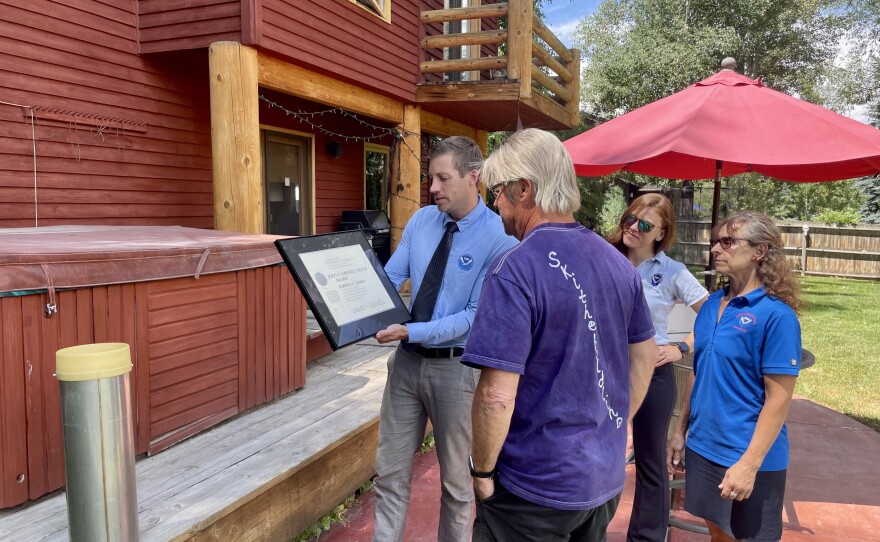Longtime state hydrological engineer Matt Lindon has lived in the Park City area for over 40 years.
He can tell you a lot about water, and the rest of the weather too. That includes how high Willow Creek is running behind his house, in cubic feet per second.
Lindon was around when Salt Lake City flooded in 1983, and the state engineer asked him for data on snowpack, runoff and reservoir capacity.
“So I started looking for data on this kind of thing, and 40 years ago, it was a tough find,” he said.
Another tough find: precise data on snowfall and precipitation in the Snyderville Basin. He requested to start a National Weather Service observation station at his house in Silver Springs in 1992, and has manned it every day since.
On Tuesday, the Salt Lake City National Weather Service honored him with the 2022 John Campanius Holm Cooperative Observer Award for his dedicated weather cataloging.
“His reports of extreme weather events ranging from winter blizzards to the recent widespread drought have been pivotal for forecasting and tracking climate data,” said Darren Van Cleave, the meterologist-in-charge at the National Weather Service Salt Lake City office.
The cooperative observer program is a network of non-weather service employees who volunteer to provide the NWS with meteorological data from their own backyards. In Lindon’s case, it’s literally his backyard.
The greater Park City area only has one other cooperative observation site, at the Park City Library. Observations program leader Lisa Verzella said it’s been operational since the 1800s.
Well-known cooperative observers at the Park City location have included the late beloved skier and avalanche forecaster Rip Griffith. KPCW DJ Alex Natt took over Park City observations when Griffith passed away last June.
As the Snyderville Basin’s cooperative observer, Lindon has taken snow and precipitation measurements nearly every day since 1992. When he’s away, his wife Tracey has kept the streak alive.
Summertime is easy: measure how much water falls in his gauges. During the winter, it’s a little more involved.
“Every morning I take [the gauge] in and melt it,” Lindon said. “I get the water content; I measure the snow depth, so now I can come up with density.”
Lindon said, back in ‘90s, Utah’s powder was about 5% water, 95% air. A really good powder day was 3% water.
Now, he’s reading closer to 8%. At least Utah’s still beating the Cascades and Sierra Nevada, which Lindon puts at 10% and 20% density, respectively.
Of the estimated 8,000 cooperative observers around the United States, Van Cleave said only 25 receive the John Campanius Holm award annually.

“Matt’s award is named in honor of John Campanius Holm, a Lutheran minister who was the first person known to have taken systematic weather observations in 1644 and 1645 in the American colonies,” Van Cleave said.
It’s the second highest honor in the cooperative observer program, the highest being the Thomas Jefferson Award. To be eligible for the Jefferson Award, observers must have already won the Holm Award at least five years prior.
Only three to five observers earn the Jefferson Award each year, and Lindon said he’s gunning for it. Verzella said she’ll nominate him—as long as he keeps up the good work.






